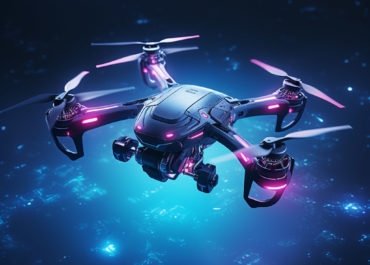Mini drones, specifically those weighing under 250g, have taken the world by storm. These small, lightweight drones have become increasingly popular among hobbyists, enthusiasts, and even professionals. In this article, we will explore the phenomenon of mini drones weighing under 250g, the reasons behind their popularity, their advantages and disadvantages, and the regulations surrounding their use.
The Rise of Mini Drones
Understanding the appeal of mini drones
The appeal of mini drones lies in their compact size, affordability, and ease of use. These drones are portable, allowing users to easily carry them in a backpack or pocket. Additionally, mini drones are often more affordable compared to their larger counterparts, making them accessible to a wider audience. Their simplicity and user-friendly features also make them an attractive option for beginners.
The impact of technological advancements
Technological advancements have played a significant role in the rise of mini drones. The development of lightweight materials, improved battery life, and advanced stabilization systems has made it possible to create small drones that are capable of capturing high-quality aerial footage and performing various maneuvers.
Increasing demand for aerial photography and videography
The demand for aerial photography and videography has also contributed to the popularity of mini drones. These compact devices allow photographers and videographers to capture unique perspectives and stunning aerial shots without the need for expensive equipment or professional training.
Advantages of Mini Drones
Portability and convenience
One of the key advantages of mini drones is their portability. Their small size and lightweight design make them easy to carry around, allowing users to capture aerial footage on the go. Whether you’re hiking in the mountains or exploring a bustling city, mini drones can be easily transported and deployed.
Simplified regulations and requirements
In many countries, mini drones weighing under 250g are subject to less stringent regulations compared to larger drones. This means that users can fly these drones without the need for special permits or licenses in certain areas. However, it’s important to note that regulations may vary depending on the country and specific flight locations.
Beginner-friendly features
Mini drones often come equipped with beginner-friendly features such as altitude hold, headless mode, and one-key takeoff/landing. These features make it easier for beginners to control the drone and reduce the learning curve associated with flying a drone for the first time.
Lower risk of damage and injury
Due to their smaller size and lightweight nature, mini drones pose a lower risk of causing significant damage or injury in the event of a crash. This can provide users with peace of mind, especially when flying in crowded areas or around people.
Disadvantages of Mini Drones
Limited flight time and range
One of the main disadvantages of mini drones is their limited flight time and range. Due to their smaller size, mini drones typically have smaller batteries, resulting in shorter flight durations. Additionally, their range may be limited compared to larger drones, restricting their ability to explore larger areas or fly long distances.
Less stability in windy conditions
Mini drones are more susceptible to wind due to their lightweight design. In windy conditions, these drones may struggle to maintain stability and could be more challenging to control. This can limit their usability in certain weather conditions or outdoor environments.
Limited payload capacity
Mini drones often have limited payload capacity, meaning they may not be able to carry heavy cameras or other accessories. This can restrict their ability to capture high-quality aerial footage or perform certain tasks that require additional equipment.
Smaller size may affect visibility
The small size of mini drones can make them harder to spot in the sky, especially from a distance. This can increase the risk of losing sight of the drone or accidentally flying it out of the operator’s visual range, potentially leading to crashes or other safety hazards.
Regulations for Mini Drones
General regulations for drone operation
While regulations may vary by country, there are generally some common rules and regulations that apply to drone operation. These include flying within visual line of sight, avoiding restricted airspace, respecting privacy laws, and not flying near airports or emergency response areas. It is crucial for drone operators to familiarize themselves with the specific regulations in their country or region before flying a mini drone.
Specific regulations for mini drones under 250g
In some countries, mini drones weighing under 250g may be exempt from certain regulations that apply to larger drones. However, it’s important to note that this exemption does not mean there are no rules or restrictions. For example, operators may still need to adhere to height restrictions, maintain a safe distance from people and property, and follow any specific local regulations.
Responsible drone operation and safety precautions
Regardless of the size or weight of the drone, responsible operation and safety precautions should always be a priority. This includes conducting pre-flight checks, ensuring the drone is in good working condition, flying in appropriate weather conditions, and being mindful of the surroundings and potential hazards.
Mini drones weighing under 250ghave become a popular choice for drone enthusiasts, hobbyists, and professionals alike. Their compact size, affordability, and ease of use make them a convenient option for capturing aerial footage and exploring the world from a new perspective. However, it’s important to consider the advantages and disadvantages of mini drones, such as their limited flight time and range, as well as the regulations that govern their use. By understanding these factors and operating mini drones responsibly, users can fully enjoy the exciting possibilities that these lightweight devices offer.
